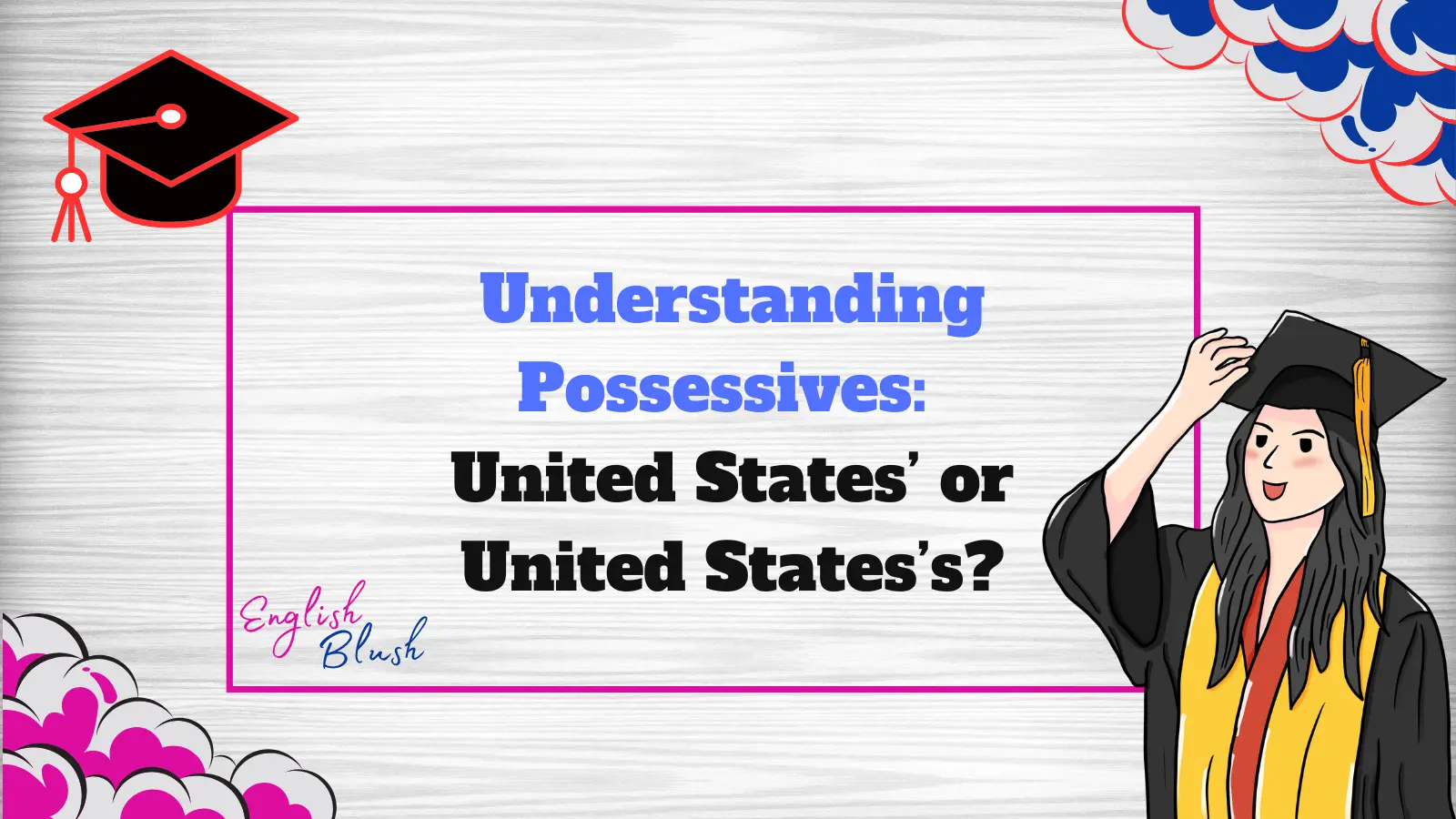When we talk about something that belongs to someone or something, we often add an apostrophe (‘) or (‘s). These are known as possessives. But, possessives can be a little tricky, especially with things like the United States. Let’s dive in and make it easy for you to understand the different forms of possessives, including when to use United States’ or United States’s.
In this article, we’ll explain the singular possessive, plural possessive, and the plural forms of the United States in simple words, and we’ll use a table to help make things clearer!
What Does “Possessive” Mean?
A possessive shows that something belongs to someone or something. For example, if you say “Jake’s toy,” you mean that the toy belongs to Jake.
Let’s look at the different ways to show possession!
Singular Possessive
What is a Singular Possessive?
A singular possessive shows that one person or thing owns something.
For example:
- Jake’s pencil means the pencil belongs to Jake.
When to Use United States’ or United States’s?
The United States is a bit special because it refers to more than one state. But, even though “States” is plural, we treat United States as a singular noun when we want to show possession.
To form the singular possessive of United States, you add an apostrophe after the “S” at the end of “States.” So, it becomes United States’.
Examples:
- United States’ history = the history of the United States
- United States’ government = the government of the United States
Some people may also see the possessive as United States’s, but this is less common in writing, especially for countries.
Plural Possessive
What is a Plural Possessive?
A plural possessive shows that something belongs to more than one person or thing.
For example:
- The dogs’ bones means that the bones belong to more than one dog.
How do you show the plural possessive of “United States”?
Well, here’s the trick! The United States is already plural, because there is more than one state. So, to show possession for the plural form, we add just the apostrophe (’) after the “S”.
Examples:
- The United States’ flag = the flag of the United States.
- The United States’ culture = the culture of the United States.
Table of Key Possessive Forms
Here’s a table to summarize:
| Form | Example | What it Shows |
|---|---|---|
| Singular Possessive | United States’ history | The history of the United States |
| Plural Possessive | The United States’ flag | The flag of the United States |
| Regular Plural Form | United States | The collection of states (no apostrophe) |
Understanding Plural Forms
Sometimes, you might want to talk about something in its plural form instead of possession. In that case, it would simply be “United States.” There’s no apostrophe, because you’re just referring to the country, not showing possession.
Example:
- The United States is a large country.
When Can You Use “United States’s”?
In formal writing, United States’ is preferred for showing possession. However, in more casual writing, sometimes United States’s might appear. Both forms are technically correct, but the first one is more commonly used in academic and official contexts.
Why Does This Matter?
Understanding when to use United States’ or United States’s helps make sure your writing is clear and accurate. Even small mistakes can make things harder to understand, but don’t worry! Now you know the rules, so you can easily use these possessive forms without confusion
Conclusion
To sum up, here’s what you need to remember:
- The possessive form of United States is United States’, not United States’s (but both are used sometimes).
- Use United States’ when showing possession of something that belongs to the United States (e.g., United States’ government).
- Use United States without an apostrophe when talking about the country in general, like the United States of America.
Learning about possessives is just one piece of making writing easier. With these tips, you’re ready to tackle possessives with confidence!





